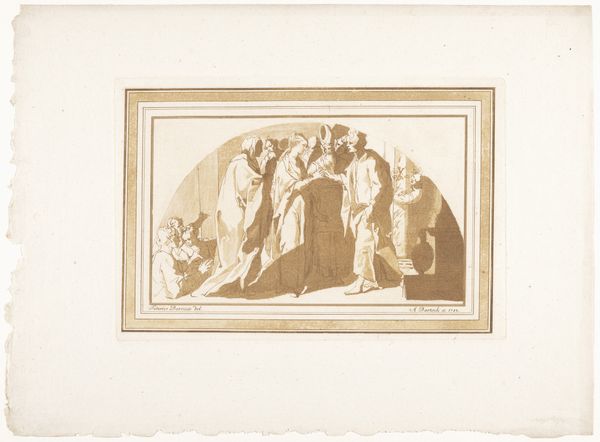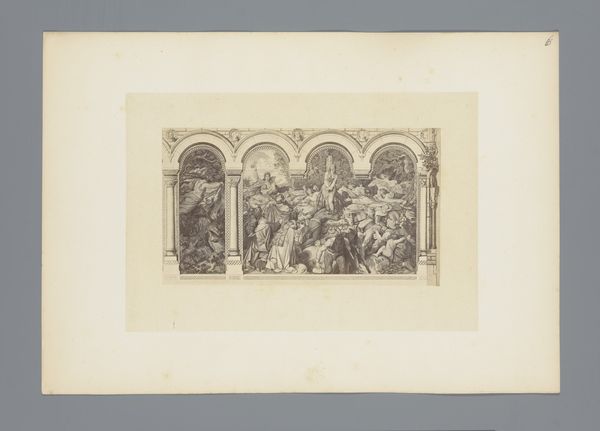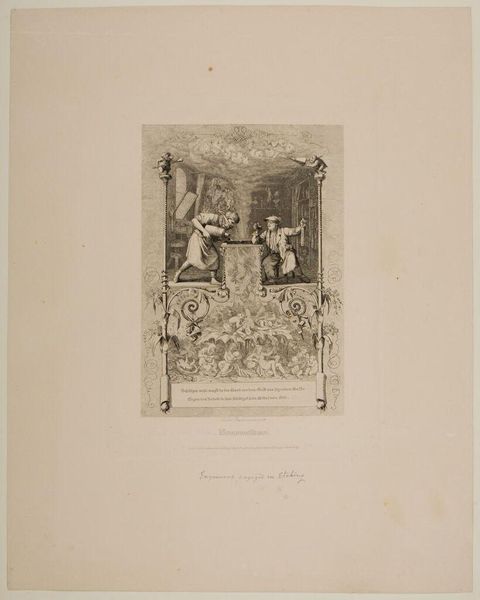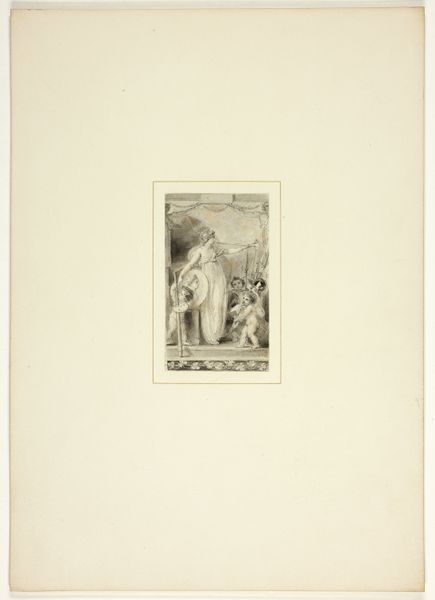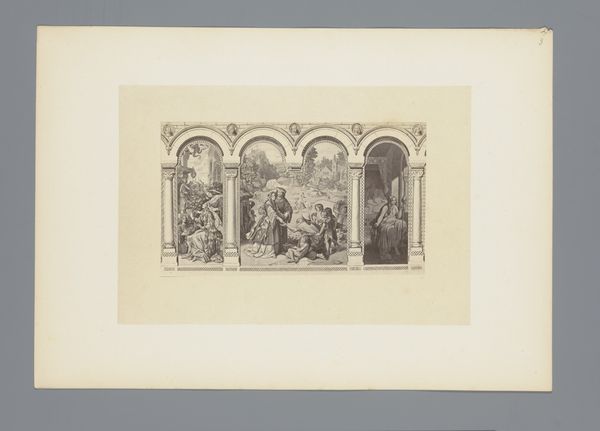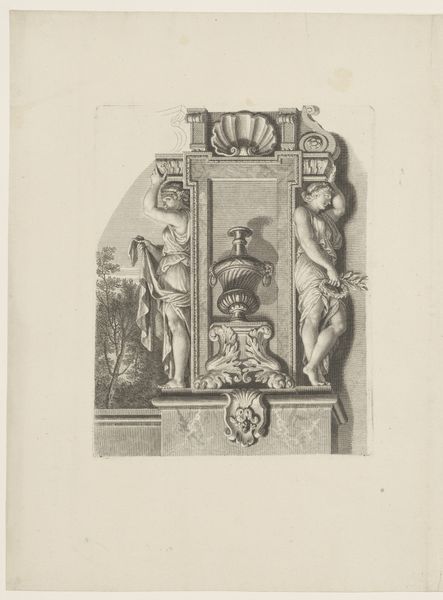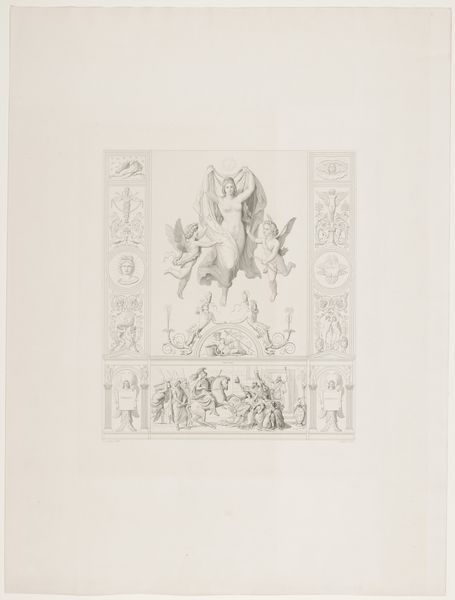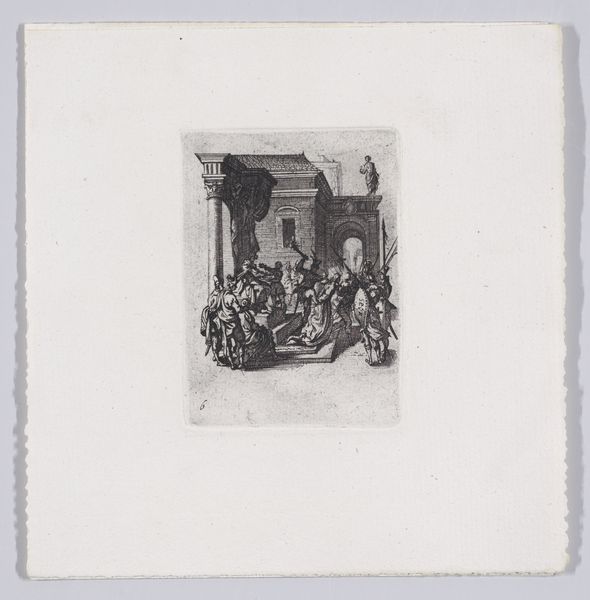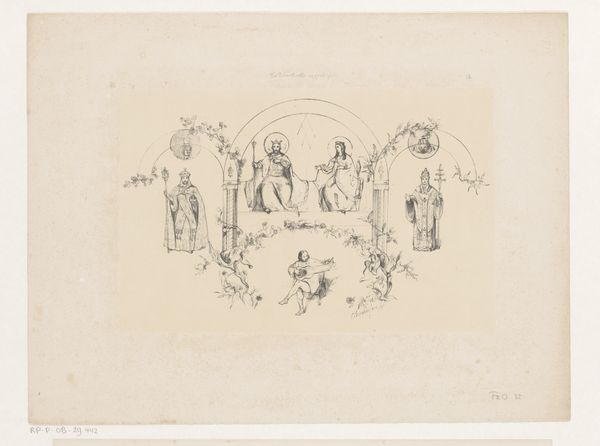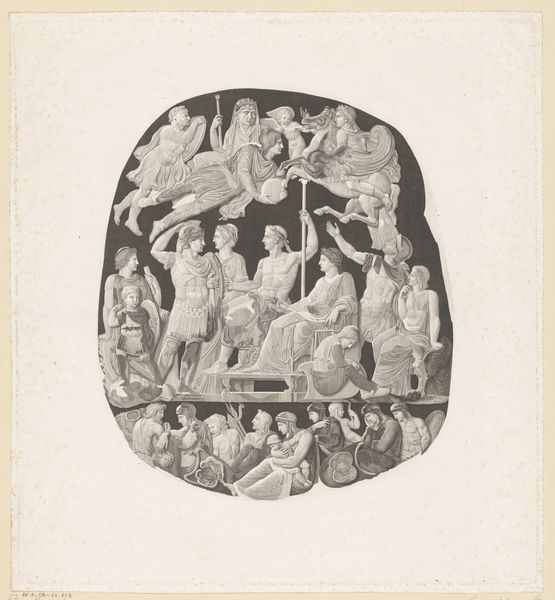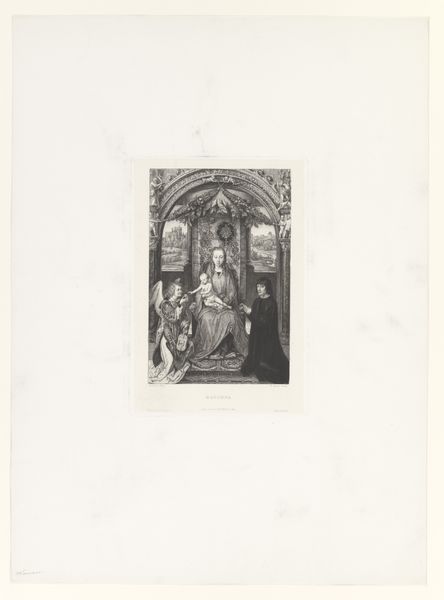
print, engraving
# print
#
old engraving style
#
figuration
#
line
#
history-painting
#
academic-art
#
engraving
#
realism
Dimensions: height mm, width mm
Copyright: Rijks Museum: Open Domain
Curator: This print, executed sometime between 1851 and 1922, is entitled "Peter and John Healing the Paralytic at the Gate of the Temple," attributed to Tommaso di Lorenzo. It is done in an old engraving style and presents the biblical scene with a clear interest in Realism. What is your initial response to the image? Editor: It strikes me as quite powerful. Despite being black and white, the use of line and shadow evokes a solemn atmosphere. The classical architecture and the figures arranged almost like a frieze give it a sense of timelessness, and human drama. Curator: The choice to depict this event from the Acts of the Apostles is interesting in its own right. The story encapsulates early Christian values, doesn’t it? The public act of healing demonstrates the church’s emerging role in addressing social needs, providing tangible benefits, and establishing moral authority in first-century society. Editor: Precisely. It taps into a deep well of visual symbolism. The temple gate itself represents a point of access—both physical and spiritual. The lame man symbolizes those marginalized or excluded, physically or otherwise. His healing isn’t just a miracle; it’s symbolic of inclusion and transformation offered by the Christian faith. Curator: And we should note that it uses academic art's conventions in the image and that means that it speaks to a specific, educated audience, conveying social expectations around piety and civic responsibility prevalent in the 19th century. Art was integral to cultivating social mores. Editor: Absolutely. Look how the print emphasizes the apostles' gestures – their hands outstretched in a gesture of benevolence, almost conveying power or strength to those in need, echoing imagery seen for millennia and conveying something we all innately grasp regardless of creed. Curator: It really shows how an artwork created long ago continues to speak volumes to viewers, both by portraying a biblical event but also reflecting values that are more contemporary. Editor: Yes, that is definitely part of the artwork’s lasting power, I find. The story resonates across the ages because it encapsulates the timeless struggle against human suffering, a search for faith and salvation which many find beautiful.
Comments
No comments
Be the first to comment and join the conversation on the ultimate creative platform.
